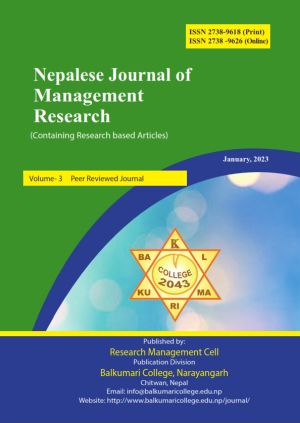Challenges and Prospects of Nepalese Microfinance program: A Mini Review
DOI:
https://doi.org/10.3126/njmgtres.v3i1.57914Keywords:
GGS, income generation, loan portfolio quality, mission drift, over-indebtedness, poverty reduction, SustainabilityAbstract
The main purpose of this paper is to highlight the challenges and prospects of microfinance program in Nepal. This study is based on descriptive research design. Microfinance has the potential to have powerful impact on poverty reduction and women’s empowerment. Microfinance institutions (MFIs) have two missions: outreach through poverty reduction and sustainability. Nepalese microfinance sector faces numbers of challenges like overcrowd in certain geographical region, multiple banking, unhealthy competition, political unawareness, mission drift, and high rate of member dropout, high rate of employee turnover, over-indebtedness, loan overdue, constraint resources and lack of entrepreneurial centric program. Nepalese microfinance institution needs to create healthy environment of microfinance sector with the aim of social responsibility. MFIs need to move beyond the traditional micro credit methodologies and innovative through digitization to extend financial services more effectively to the rural people. This study focuses on current picture of Nepalese microfinance industry which explores current issues. The findings of this study is useful and applicable in BFIs, microfinance expert, economist, regulator, and decision makers.
Downloads
Downloads
Published
How to Cite
Issue
Section
License
The journal allows the author to hold the copyright and retain publishing rights without restrictions.

